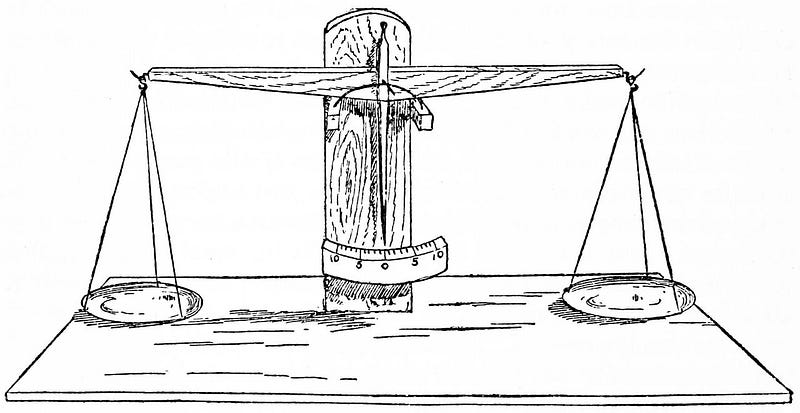How a 2,000 year-old theory of human motivation can still help both individuals and organizations become the best versions of themselves.

Photo by Hello I’m Nik on Unsplash
What makes a great leader? What qualities does a great leader have that compel people to follow her? What gives a great leader that gravitas — that ability to inspire, manage, and challenge others?
And what about a team of people? What qualities do great teams possess that other teams don’t? What makes a team of people able to go above and beyond, meet tight deadlines, and build a strong foundation of success? What makes a team able to stand the tests of both time and growth?
In short, what factors make a person or an organization truly excellent?
This question is far from new. In fact, a great many talented thinkers have been trying to answer it for millennia. That makes what I’m suggesting perhaps all the more bold. Plato — yes the Greek philosopher who lived over 2,000 years ago — actually built a great model. With some very minor tweaks, it provides a great way to view your journey toward excellence — for both you as a single person and for an entire company.
Of Motivation and Mental Models
For Plato, excellence is about harmony. The human psyche is made up of three distinct motivating forces — each of them performing a different function. Likewise, a group or team of people features those 3 same motivations, in the form of people whose dominant motivators are one of the three forces. The great person gets each of those forces doing what it does best and working in harmony toward a common goal. The great leader does the same for her team.
A word of warning: this is a mental model that attempts to sort people into neat categories. As with any such model of human nature, the categories will rarely seem as clear cut in practice as they sound in theory. But we can chalk that up to the tricky business of studying people: it’s usually a bit messy and unclear. But that shouldn’t keep us from trying out such a model on our journey to be more effective, and to become better leaders — especially if we find that such a model yields results.
The 3-Part Model of the Person and Team
Plato identified 3 different forces at work in our psyche; 3 different things that motivate us:
-
The Appetite seeks comfort, pleasure, and simple material things.
-
The Spirit seeks honor, victory, and recognition.
-
Reason seeks truth and wisdom.
According to Plato, one of the three drives become dominant. This led him to believe that there were 3 kinds of people, classified by which of the drives was predominant.
- Those driven primarily by appetite are called workers.
- Those driven primarily by spirit are called warriors.
- Those driven primarily by reason are called guardians.
It’s worth noting here that guardians — as Plato envisioned them — are rare beings. They were those truly excellent people who are able to avoid the pitfalls of the various passions associated with the spirit and the appetite. In a sense, becoming a guardian is what we should all aim for. To be a guardian is to reach the level of human excellence.
In a word, the goal in both leading yourself and leading a team is simple: harmony. When we fail to get the 3 parts of our nature harmonized we feel anxiety, stress, frustration, or all of the above. But those emotions are commonplace. In ourselves, we see each of the drives working against each other, and in our teams we see the different types of people working against each other. The result is conflict, chaos, and a lack of growth.
When things go well for us as individuals, our drives do the work they do best, and we thrive. When things go well for a team, each type of person does what they do best, and the company moves briskly forward — like a ship being rowed by a well-guided crew.
Let us now take a look at the 3 drives and 3 types of people in depth.
Appetite /Workers
The appetite motivates us through an attraction to more basic and short-term, concrete things. The paradigmatic attractors are the material things like food and drink, money, sex, and so on. But for our purposes, another kind of attractor is the simple pleasure of being able to check things off of a to-do list, or to just complete some tactical work.
In a team, the worker is primarily moved by the desire to just get things done. They are the folks who put their heads down and get the job done. They hunger for the basic satisfactions of the job well done. They want projects with a clear direction and end-game, and they work diligently — for the most part. They respond to the practical rewards of money, promotion, or just the small-scale recognition for having completed a project or task.
But workers can tend to be short-term thinkers, and can prove to be limiting forces in brainstorming sessions — where the objective is to think more big-picture. That can elicit complaints from teammates, so it’s up to a successful leader to remember that the workers are focused on things other than the blue sky and lofty ideas — and harness their energy accordingly.
Spirit/Warriors
The spirit is that part of us that responds to big achievements, notoriety, respect, honor, valor, and the like. It thrives on conflict and ambitious undertakings with far-out horizons. It’s the part that you tap into when you’re contemplating your legacy, as well as when you’re scrolling through LinkedIn or Facebook — comparing your resume or timeline to those of others. It’s a more romantic and less linear part of the psyche.
You can often count on the spirited folks to go make a blind pitch to investors or prospective clients, and sell a great story about what your company is trying to do. Again, such a pitch will likely be light on details, but the spirited folks aren’t motivated by details, and thus don’t motivate others with details. They motivate by stirring in others the romantic ideals of valor, recognition, and notoriety. And it’s arguable that such things are every bit as important as making a detailed plan.
The warriors may be able to rouse a team to work toward a crazy, romantic goal, but don’t get this confused with vision. Just because the warrior is willing to run headlong in a certain direction — and has convinced others to faithfully run with them — that doesn’t mean the warrior knows what awaits them there.
The Warriors are often the ones who step up during a brainstorming session with the crazy and industry-disrupting idea — though they may not have any idea how to do the dirty work required to implement it. At that point, the workers will likely step up and demand a clear plan toward achieving such a lofty goal. That’s the benefit of having both types of people there.
Warriors are often risk-takers — a trait that has definite drawbacks. They can get caught up in the pursuit of lofty goals or making a name for themselves, and fail to incorporate more practical and prudent thinking in their decision-making. Whenever you see a company tank after the quick “pivot” of a new CEO, it’s likely that a warrior executive was at the helm.
Reason/Guardians
Every human has the faculty of reason, and use it to some degree or another. The practical application of reason is weighing the risks and rewards of possible courses of action, and how they match or conflict with values or goals. Personal excellence — as Plato defined it — is when your faculty of reason controls your spirit and appetite, leveraging their respective strength and momentum.
Those people whose faculty of reason outstrips their appetites and spirit Plato called guardians. They are the ones who have honed this faculty in such a way that they have significant wisdom. That means they not only have a great deal of knowledge, but also know how and when to best deploy it. Sure, they may still feel passion and hunger for honor and notoriety, but they have the uncanny ability to use reason as a check against giving way to the lure of appetite and spirit.
It should come as no surprise, then, that guardians tend to make the best leaders. A team ruled by a guardian would by definition take the best actions. Since guardians have unparalleled wisdom and reasoning abilities, the companies they lead would be the best.
The Problem with Guardians
So the way to ensure that your company has great leadership is to get guardians in there to lead! Simple, right? Unfortunately, there are a few issues with effectively installing guardians at the helm of a company.
-
Guardians are usually not the type to promote themselves as leaders.
In Plato’s Republic, he noted that since guardians’ main interest is in seeking wisdom, they will not tend to seek out positions of power and influence. They would rather spend their time trying to figure out the secret truths of a given domain. A guardian in a given company may be hidden away combing through discarded reports or media that seems to have nothing to do with the business at hand. They will rarely — if ever — grab the bull by the horns and take over a company.
-
It’s hard to tell who is a true guardian, and who is simply a delusional warrior.
Guardians are able to comprehend and create some amazing ideas — many that end up having a significant impact. But at the time, those ideas may sound completely bonkers to everyone else. What’s worse: everyone else has no reliable way to tell the difference between what’s bonkers and what’s brilliant. The best option you have is to listen, and keep an open mind.
-
Guardians aren’t forever.
Well, no one lives forever, but this is a problem for guardians because when we find a guardian for a given company or team, we get tempted to build everything around them. But this is a mistake. A great leader — like every human — is temporary. They are subject to the 3 Ds: deterioration, departure, and death. They may become too old, or too preoccupied with their personal life (god forbid) to engage in the way a company demands. Or quite simply, they may just leave or die.
So what is a company to do when it needs a good leader? There are 2 things to do: (a) grow a supply of guardians from within, and (b) as much as possible, substitute core values, a mission, and operating principles to do the job of guardians.
Grow Good Guardians
Plato’s Republic is in part a discussion of how to make people and societies the best they can be. Quite a bit of that happens from the ground up — meaning that good leaders are grown in environments that are conducive to raising even-tempered, thoughtful, and reasonable individuals. Just as it takes a village to raise good children, it also takes a company to raise great leaders.
So an effective approach to getting great leaders for your company is to create an environment that fosters the development of guardians. In other words, if you want good leadership for your company, be a company worthy of good leaders. And if you want to cultivate great leadership within yourself, be worthy of the tutelage and mentorship of others who can teach you.
Here are a few simple things that can be done in order to be a person or a company that can effectively grow guardianship.
- an attitude of humility
- open, candid, and respectful communication
- continuously demonstrated genuine care for others
- a willingness to sacrifice rapid exponential growth in order to create and cultivate healthy working relationships
Note that all of the above advice works just as well for individuals as it does for companies. These things are simple attitude adjustments, with knock-on effects that create an excellent culture within a company, and create excellent character within a person.
Part of Plato’s philosophy examined the reciprocal relationship between a person and their society. It works just as well when we look at a person and the company they work for. A good company will create good potential leaders, and good leaders will return whatever investment the company made by staying aboard to keep that company great. But it is not a quick process, and it requires a willingness that seems to be lacking these days in both companies and people: the willingness to invest in each other.
Invest in a Mission, Values, and Operating Principles
Great leaders are guardians, which means they have developed their faculty of reason to be so strong that it keeps the passions and desires of themselves and others in check. But that’s pretty abstract. What does that look like in practical everyday use? The answer is simple: subordinate your desires and appetites to your faculty of reason by creating and using core values, mission, and specific operating principles.
Core values are the things that matter to you. They’re the things you want to serve and promote, but also the things you won’t compromise on.
A Mission is your why. It’s what you’re trying to achieve, and it’s your literal reason for your work — whether you’re an individual or company. It’s the particular long-term way that you’re seeking to serve your values.
Operating Principles are your best practices for what you regularly have to do. They’re the few decisions that make initially that make thousands of future decisions almost automatic — so they don’t waste your time and energy. A good set of operating principles guide your behavior effectively toward your mission and values by telling you how to handle things that come up that might normally throw those less thoughtful into fits of paralyzing indecision.
For you as a single person, the way to do this is to take time — really take time — and craft a mission, vision, and value statement for yourself. Then (and this often gets skipped) take time to ensure that there is real buy-in and commitment to the mission and the values.
Again, this is true for both individuals and companies. The reason why we don’t follow through on our goals is almost always because we didn’t fully buy in to them. The same holds true with a company. Buy-in takes time; there’s no way around it. So take the time to get buy-in.
The mission needs to be something that isn’t dictated by reactions to trends or the demands of other people. It needs to come from a place of reflection and reasoning. Once that is done, it acts as the protocol for steering the ship. When a decision must be made, refer to the mission, vision, and values already crafted. If there is a real concern that they don’t provide adequate guidance — take some time to revise them.
The Takeaway
So let’s summarize. There are 3 types of primary motivators in people: appetite, spirit, and reason. These 3 motivators manifest in 3 types of people: workers, warriors, and guardians — depending on what motivates each person.
The pathway to individual excellence is gaining self-mastery by strengthening your faculty of reason so that you can harness and control your appetite and spirit. The pathway to organizational excellence is to install guardians as leaders in your company. There is a twofold process to achieving these goals.
- Grow guardianship from within by changing your attitude (either individual or company) so that you can more effectively be led by good leaders.
- Develop a set of core values, mission statement, and operating principles to ensure that your culture and character continue to be lead by reason.
This model is simple, perhaps quaint by some accounts, but it provides a slightly different way of better understanding people and groups of them. It should serve to give us another resource for the ongoing quest toward personal and organizational excellence.























